Abstract
The electrophysiological effects of flecainide acetate (2 mg/kg as an intravenous infusion over five minutes) were assessed in 47 patients undergoing electrophysiological study. Seven patients had normal electrophysiology, 16 had a direct accessory atrioventricular pathway, 12 had dual atrioventricular nodal (AH) pathways, five had paroxysmal ventricular tachycardia, six had conduction system disease, and one patient had a left atrial tachycardia. No significant change occurred in sinus cycle length. The PA interval, AH interval, and HV interval were all significantly prolonged. The QRS complex duration increased significantly. The QT interval showed slight prolongation due entirely to the increase in QRS duration. Refractoriness of the atrial and ventricular myocardium was slightly prolonged, but was significant only at ventricular level. No significant change occurred in refractoriness of the normal atrioventricular node. Pronounced prolongation of retrograde "fast" AH pathway refractoriness was observed in those patients with dual AH pathways. Anterograde and retrograde accessory pathway refractoriness were both greatly increased. These electrophysiological properties strongly suggest that flecainide will be useful in the management of a wide variety of cardiac arrhythmias. It should be administered, however, with caution to patients with pre-existing conduction system disease. Because repolarization is not delayed flecainide is unlikely to induce ventricular arrhythmias related to prolongation of the QT interval.
Full text
PDF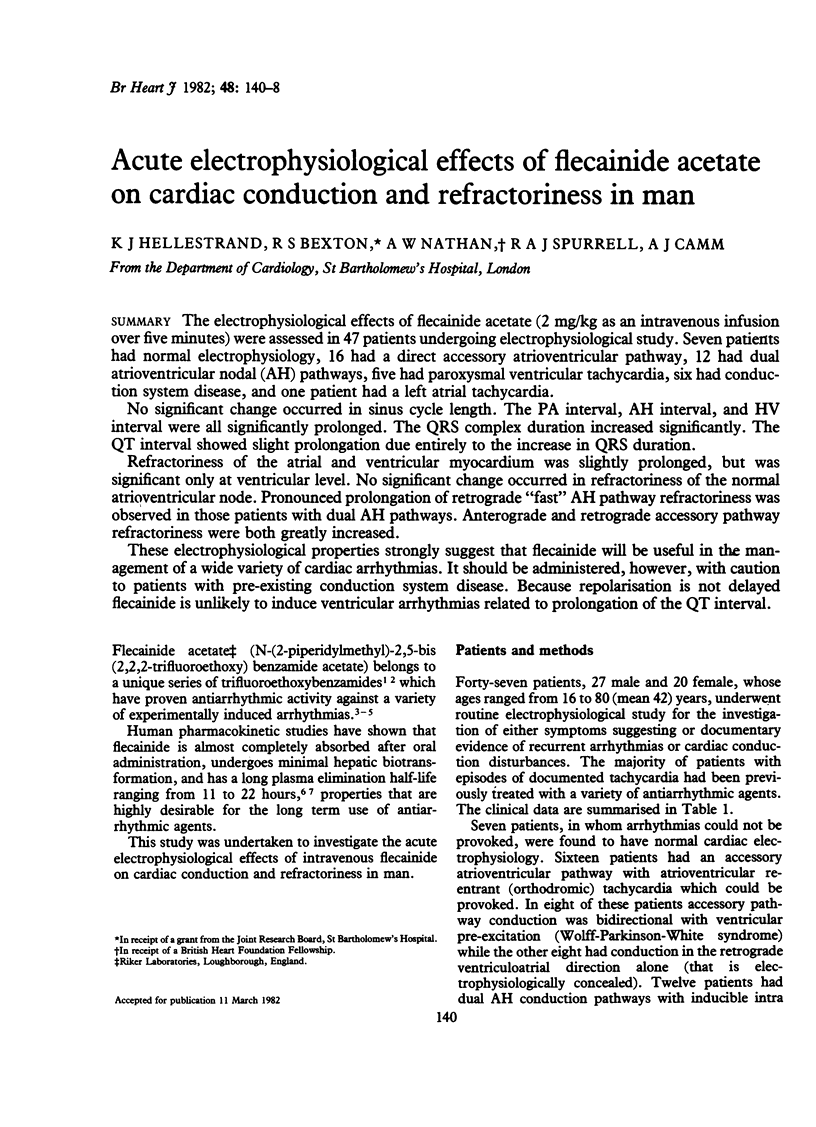
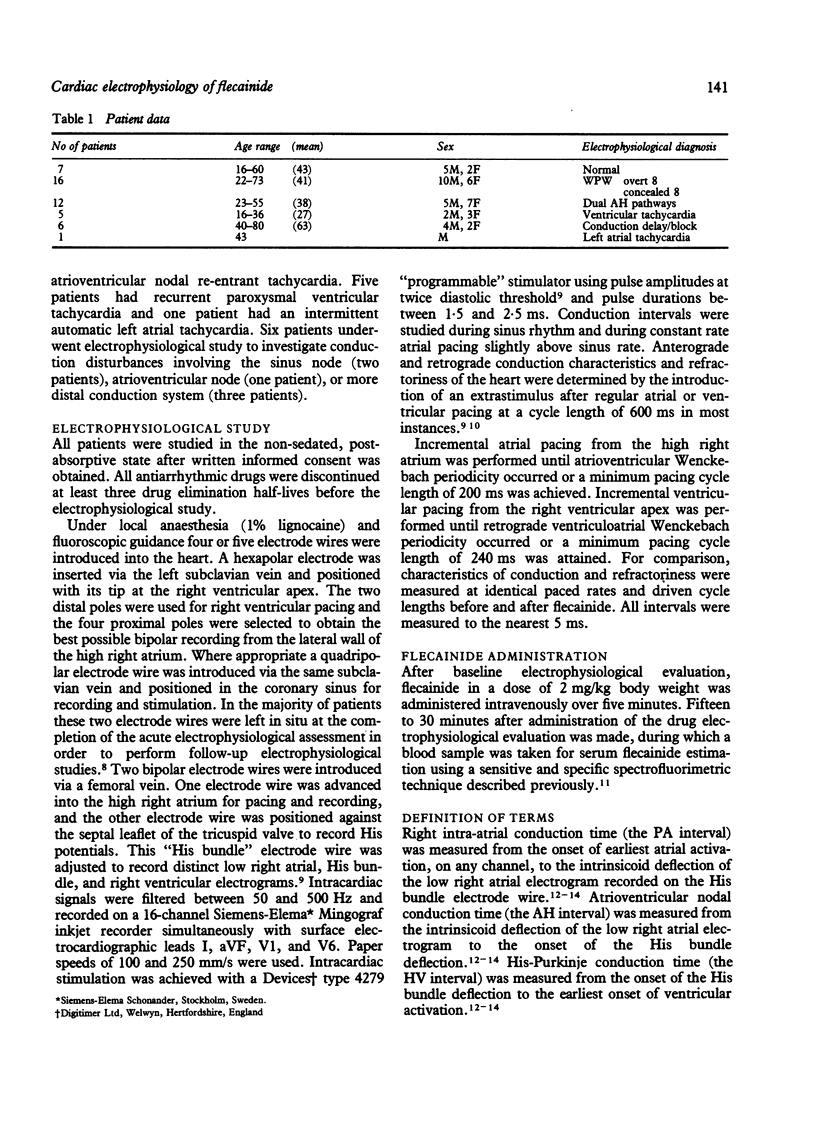
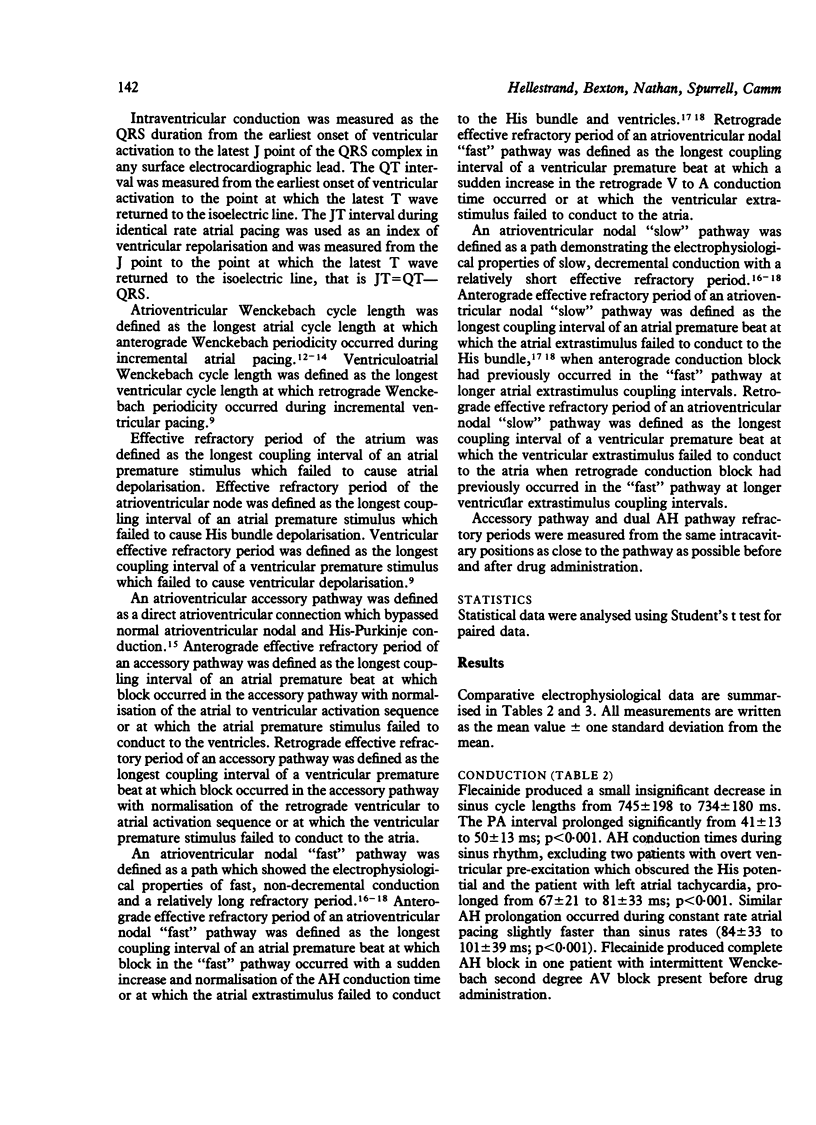
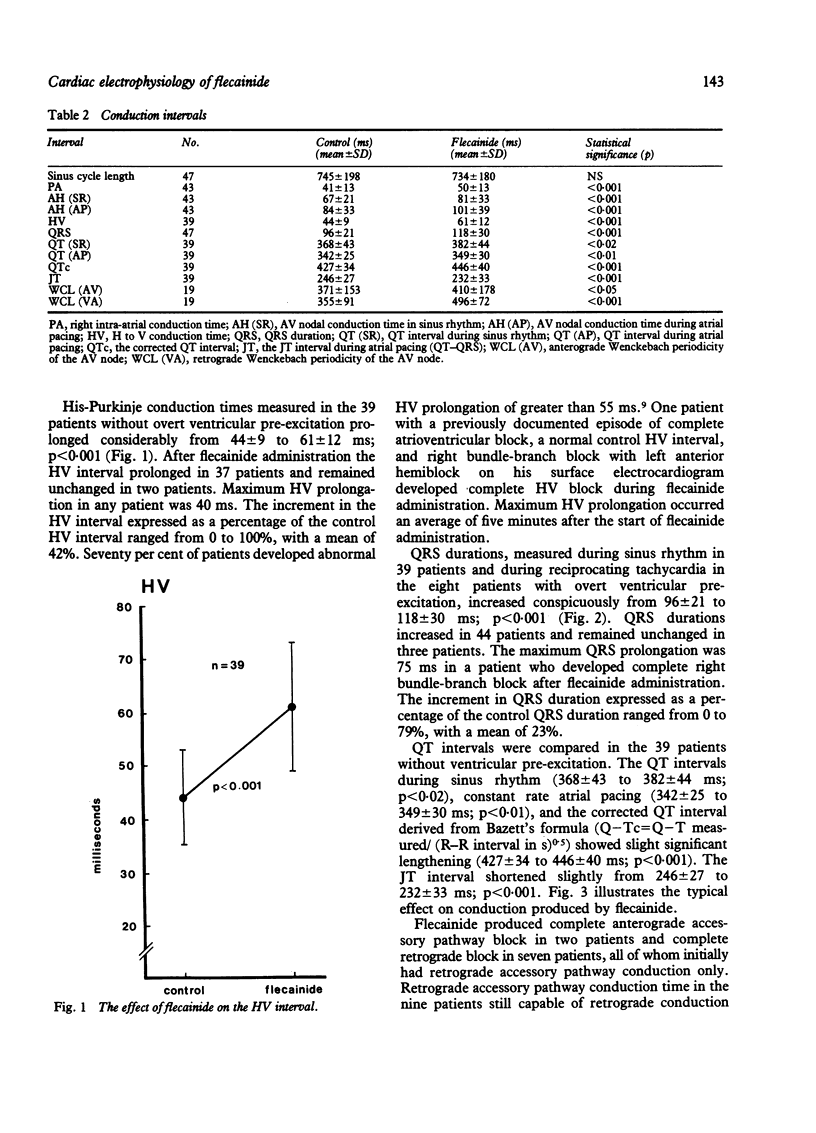
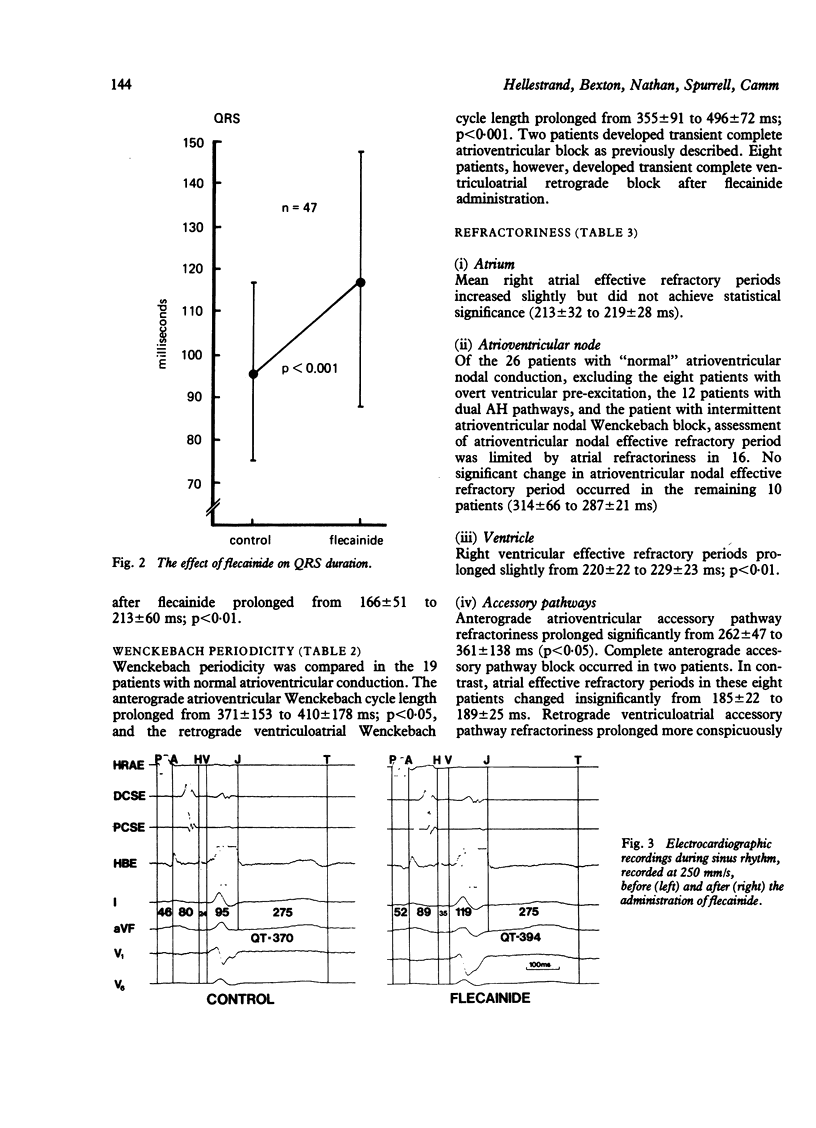
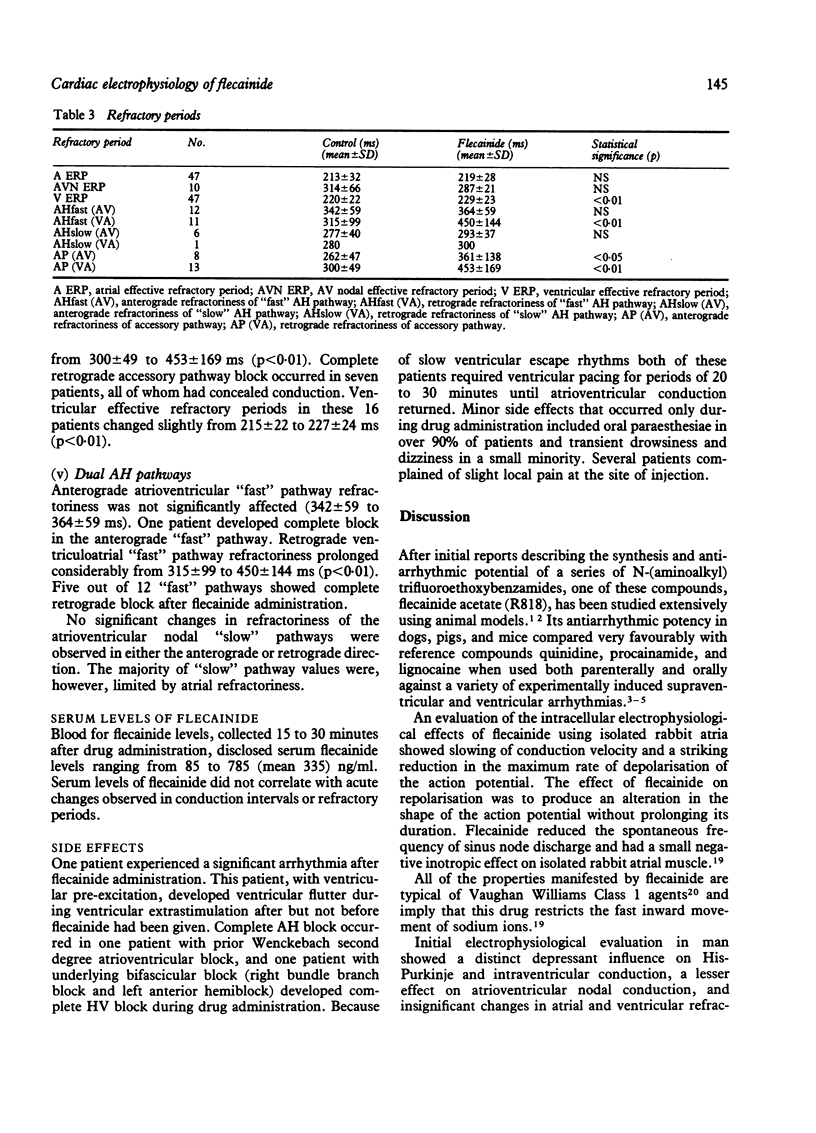
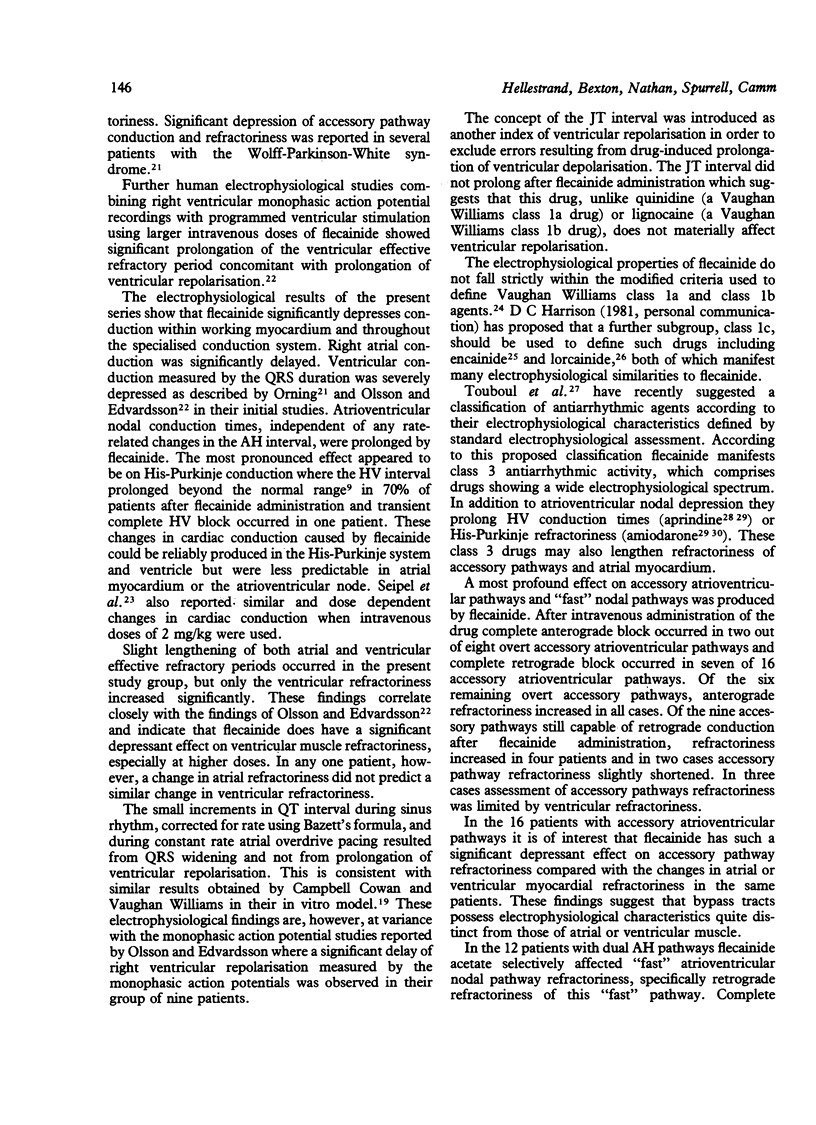
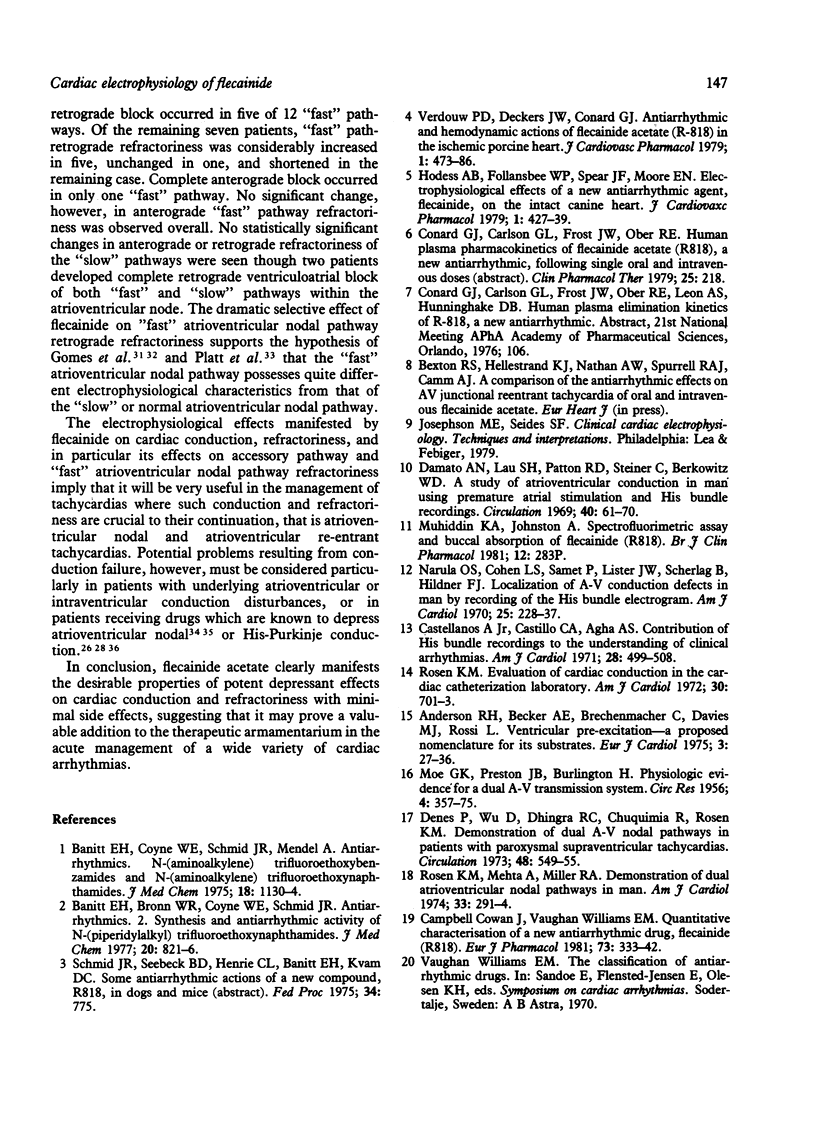
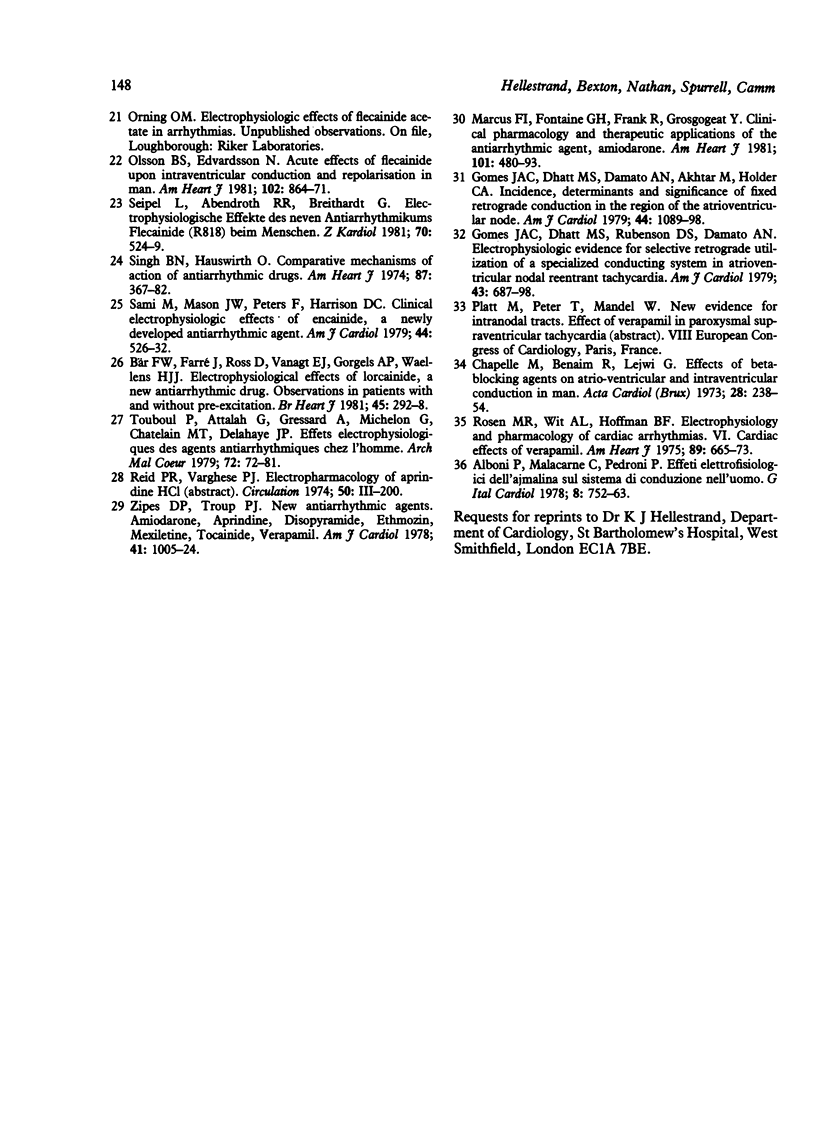
Selected References
These references are in PubMed. This may not be the complete list of references from this article.
- Alboni P., Malacarne E., Pedroni P. Effetti elettrofisiologici dell'ajmalina sul sistema di conduzione nell'uomo. G Ital Cardiol. 1978;8(7):752–763. [PubMed] [Google Scholar]
- Anderson R. H., Becker A. E., Brechenmacher C., Davies M. J., Rossi L. Ventricular preexcitation. A proposed nomenclature for its substrates. Eur J Cardiol. 1975 Jun;3(1):27–36. [PubMed] [Google Scholar]
- Banitt E. H., Bronn W. R., Coyne W. E., Schmid J. R. Antiarrhythmics. 2. Synthesis and antiarrhythmic activity of N-(piperidylalkyl)trifluoroethoxybenzamides. J Med Chem. 1977 Jun;20(6):821–826. doi: 10.1021/jm00216a016. [DOI] [PubMed] [Google Scholar]
- Banitt E. H., Coyne W. E., Schmid J. R., Mendel A. Antiarrhythmics. N-(aminoalkylene)trifluoroethoxybenzamides and N-(aminoalkylene)trifluoroethoxynaphthamides. J Med Chem. 1975 Nov;18(11):1130–1134. doi: 10.1021/jm00245a017. [DOI] [PubMed] [Google Scholar]
- Bär F. W., Farré J., Ross D., Vanagt E. J., Gorgels A. P., Wellens H. J. Electrophysiological effects of lorcainide, a new antiarrhythmic drug. Observations in patients with and without pre-excitation. Br Heart J. 1981 Mar;45(3):292–298. doi: 10.1136/hrt.45.3.292. [DOI] [PMC free article] [PubMed] [Google Scholar]
- Castellanos A., Jr, Castillo C. A., Agha A. S. Symposium on Electophysiologic Correlates of Clinical Arrhythmias. 3. Contribution of His bundle recordings to the understanding of clinical arrhythmias. Am J Cardiol. 1971 Nov;28(5):499–508. doi: 10.1016/0002-9149(71)90091-9. [DOI] [PubMed] [Google Scholar]
- Chapelle M., Benaim R., Lejwi G. Effects of beta-blocking agents on atrio-ventricular and intraventricular conduction in man. Acta Cardiol. 1973;28(3):238–254. [PubMed] [Google Scholar]
- Damato A. N., Lau S. H., Patton R. D., Steiner C., Berkowitz W. D. A study of atrioventricular conduction in man using premature atrial stimulation and His bundle recordings. Circulation. 1969 Jul;40(1):61–69. doi: 10.1161/01.cir.40.1.61. [DOI] [PubMed] [Google Scholar]
- Denes P., Wu D., Dhingra R. C., Chuquimia R., Rosen K. M. Demonstration of dual A-V nodal pathways in patients with paroxysmal supraventricular tachycardia. Circulation. 1973 Sep;48(3):549–555. doi: 10.1161/01.cir.48.3.549. [DOI] [PubMed] [Google Scholar]
- Gomes J. A., Dhatt M. S., Damato A. N., Akhtar M., Holder C. A. Incidence, determinants and significance of fixed retrograde conduction in the region of the atrioventricular node. Evidence for retrograde atrioventricular nodal bypass tracts. Am J Cardiol. 1979 Nov;44(6):1089–1098. doi: 10.1016/0002-9149(79)90174-7. [DOI] [PubMed] [Google Scholar]
- Gomes J. A., Dhatt M. S., Rubenson D. S., Damato A. N. Electrophysiologic evidence for selective retrograde utilization of a specialized conducting system in atrioventricular nodal reentrant tachycardia. Am J Cardiol. 1979 Apr;43(4):687–698. doi: 10.1016/0002-9149(79)90065-1. [DOI] [PubMed] [Google Scholar]
- Hodess A. B., Follansbee W. P., Spear J. F., Moore E. N. Electrophysiological effects of a new antiarrhythmic agent, flecainide, on the intact canine heart. J Cardiovasc Pharmacol. 1979 Jul-Aug;1(4):427–439. doi: 10.1097/00005344-197907000-00005. [DOI] [PubMed] [Google Scholar]
- MOE G. K., PRESTON J. B., BURLINGTON H. Physiologic evidence for a dual A-V transmission system. Circ Res. 1956 Jul;4(4):357–375. doi: 10.1161/01.res.4.4.357. [DOI] [PubMed] [Google Scholar]
- Marcus F. I., Fontaine G. H., Frank R., Grosgogeat Y. Clinical pharmacology and therapeutic applications of the antiarrhythmic agent amiodarone. Am Heart J. 1981 Apr;101(4):480–493. doi: 10.1016/0002-8703(81)90140-x. [DOI] [PubMed] [Google Scholar]
- Narula O. S., Cohen L. S., Samet P., Lister J. W., Scherlag B., Hildner F. J. Localization of A-V conduction defects in man by recording of the His bundle electrogram. Am J Cardiol. 1970 Feb;25(2):228–237. doi: 10.1016/0002-9149(70)90583-7. [DOI] [PubMed] [Google Scholar]
- Olsson S. B., Edvardsson N. Clinical electrophysiologic study of antiarrhythmic properties of flecainide: acute intraventricular delayed conduction and prolonged repolarization in regular paced and premature beats using intracardiac monophasic action potentials with programmed stimulation. Am Heart J. 1981 Nov;102(5):864–871. doi: 10.1016/0002-8703(81)90037-5. [DOI] [PubMed] [Google Scholar]
- Rosen K. M. Evaluation of cardiac conduction in the cardiac catheterization laboratory. Am J Cardiol. 1972 Nov 8;30(6):701–703. doi: 10.1016/0002-9149(72)90615-7. [DOI] [PubMed] [Google Scholar]
- Rosen K. M., Mehta A., Miller R. A. Demonstration of dual atrioventricular nodal pathways in man. Am J Cardiol. 1974 Feb;33(2):291–294. doi: 10.1016/0002-9149(74)90292-6. [DOI] [PubMed] [Google Scholar]
- Rosen M. R., Wit A. L., Hoffman B. F. Electrophysiology and pharmacology of cardiac arrhythmias. VI. Cardiac effects of verapamil. Am Heart J. 1975 May;89(5):665–673. doi: 10.1016/0002-8703(75)90514-1. [DOI] [PubMed] [Google Scholar]
- Sami M., Mason J. W., Peters F., Harrison D. C. Clinical electrophysiologic effects of encainide, a newly developed antiarrhythmic agent. Am J Cardiol. 1979 Sep;44(3):526–532. doi: 10.1016/0002-9149(79)90407-7. [DOI] [PubMed] [Google Scholar]
- Seipel L., Abendroth R. R., Breithardt G. Elektrophysiologische Effekte des neuen Antiarrhythmikums Flecainid (R 818) beim Menschen. Z Kardiol. 1981 Jul;70(7):524–529. [PubMed] [Google Scholar]
- Singh B. N., Hauswirth O. Comparative mechanisms of action of antiarrhythmic drugs. Am Heart J. 1974 Mar;87(3):367–382. doi: 10.1016/0002-8703(74)90080-5. [DOI] [PubMed] [Google Scholar]
- Touboul P., Attalah G., Gressard A., Michelon G., Chatelain M. T., Delahaye J. P. Effets électrophysiologiques des agents antiarythmiaques chez l'homme. Tentative de classification. Arch Mal Coeur Vaiss. 1979 Jan;72(1):72–81. [PubMed] [Google Scholar]
- Verdouw P. D., Deckers J. W., Conrad G. J. Antiarrhythmic and hemodynamic actions of flecainide acetate (R-818) in the ischemic porcine heart. J Cardiovasc Pharmacol. 1979 Jul-Aug;1(4):473–486. doi: 10.1097/00005344-197907000-00010. [DOI] [PubMed] [Google Scholar]
- Zipes D. P., Troup P. J. New antiarrhythmic agents: amiodarone, aprindine, disopyramide, ethmozin, mexiletine, tocainide, verapamil. Am J Cardiol. 1978 May 22;41(6):1005–1024. doi: 10.1016/0002-9149(78)90853-6. [DOI] [PubMed] [Google Scholar]


